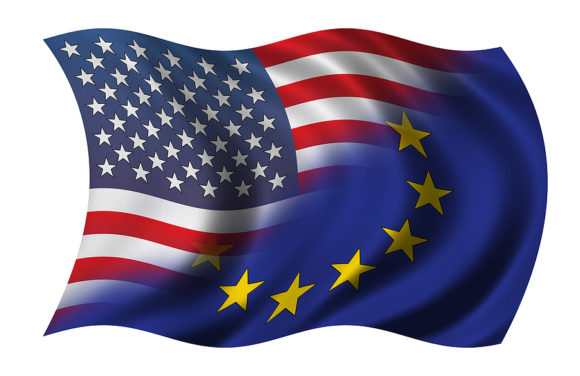Representatives of the United States and the European Union met in Brussels this week to continue their joint negotiations for a bilateral agreement on insurance and reinsurance measures.
“Both sides continued to discuss in good faith matters relating to group supervision, exchange of confidential information between supervisory authorities on both sides, and reinsurance supervision, including collateral,” they said in a joint statement that was similar to one issued after they talked in May.
“EU and U.S. representatives exchanged concrete ideas in a constructive atmosphere, and addressed next steps towards completing negotiations in a timely manner,” today’s statement added.
In November 2015, the U.S. Department of the Treasury and the Office of the U.S. Trade Representative (USTR) announced their intention to begin negotiating a covered agreement with the EU. The talks began in February.
A covered agreement is an agreement between the U.S. and one or more foreign governments, authorities or regulatory entities regarding regulatory measures with respect to insurance or reinsurance.
European reinsurers and regulators want the U.S. to lift reinsurance collateral requirements on foreign reinsurers and treat them like U.S. reinsurers. European reinsurers and Lloyd’s of London syndicates complain they are disadvantaged compared to American competitors by the additional capital and collateral requirements of some states. They note that they must also now comply with new EU solvency [Solvency II) rules.
U.S. View
Michael McRaith, director of the Federal Insurance Office (FIO) within Treasury, has called negotiating a covered agreement with the European Union “a critical step toward leveling the playing field for American insurers and reinsurers.”
U.S. insurance groups want assurances that the EU will treat U.S. insurers fairly and recognize the U.S. regulatory scheme. Solvency II provide a process for non-EU countries to be determined to be “equivalent” to the Solvency II regime.
The American Insurance Association (AIA) supports a covered agreement and hopes it can be completed “in the very near future” because it believes U.S. insurers are not being treated fairly now.
According to Steve Simchak, director of International Affairs for AIA, since the EU’s Solvency II directive, U.S. insurers have faced increasing obstacles to competing on a level playing field in Europe and the “regulatory treatment of U.S. insurers and reinsurers is worsening, harming the ability of U.S. insurers to operate in Europe.”
He said that a covered agreement can lower these obstacles for U.S. insurers in Europe and “encourage greater cooperation between regulators in both markets as well as other regulators in the future.”
The Property Casualty Insurers of America (PCI) said that one of its main objectives is U.S.-E.U. mutual recognition of each other’s insurance regulatory regimes. “One system should not be imposed on the other and U.S. companies should not be disadvantaged in Europe,” said Bob Woody, PCI’s, vice president of policy for PCI.
The National Association of Mutual Insurance Companies (NAMIC) has been more cautious about the covered agreement talks, expressing concerns that if other issues are allowed to be injected into the talks, any agreement could ultimately undermine the functional state regulators.
“If this agreement is viewed as the first in a series of attempts to subvert the authority of state regulation through preemption, it might be seen as a dangerous precedent,” Jimi Grande, senior vice president of federal and political affairs for NAMIC, said in November when Treasury announced it intended to pursue an agreement.
“The U.S. has the power and influence to demand equivalency for our state-based insurance regulatory regime and NAMIC encourages our U.S. officials to use all means necessary to avoid regulatory changes and market disruptions due to self-serving pressure from abroad,” Grande said.
State insurance regulators and some insurers are concerned that a covered agreement could potentially preempt state law and undermine the U.S. system of state regulation of insurance. The National Association of Insurance Commissioners (NAIC) believes states should continue to handle the situation through its model law process. The NAIC has a model law that eases the collateral requirements for foreign reinsurers that has been adopted by 32 states (about 66 percent of the market).
The NAIC has said it has assurances that state regulators will have “direct and meaningful participation” in the U.S.-EU discussions. The administration has promised it will consult with Congress and state regulators throughout the negotiation process.



 North Carolina Adjuster and Son Charged With Embezzlement in Roof Jobs
North Carolina Adjuster and Son Charged With Embezzlement in Roof Jobs  Vintage Ferrari Owners’ Favorite Mechanic Charged With Theft, Fraud
Vintage Ferrari Owners’ Favorite Mechanic Charged With Theft, Fraud  Why New York’s Attorney General Objects to Trump’s Bond Insurer
Why New York’s Attorney General Objects to Trump’s Bond Insurer  USAA to Lay Off 220 Employees
USAA to Lay Off 220 Employees 

